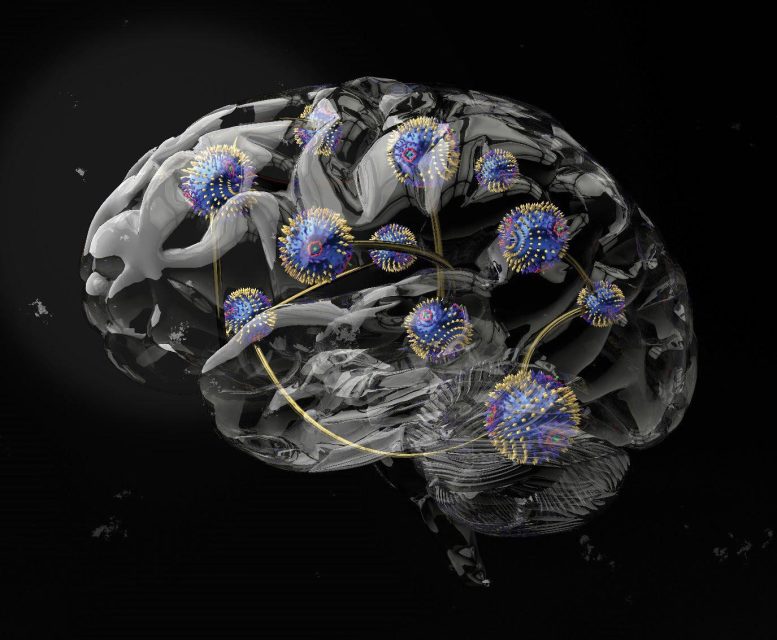
Researchers have advanced brain-inspired computing using chiral magnets, significantly reducing energy use in machine-learning tasks. The research marks progress towards more sustainable and adaptable computing technologies. An artistic representation of connected magnetic skyrmions as a computational medium for brain-inspired, reservoir computing. Credit: Dr. Oscar Lee
A new study led by researchers from UCL and Imperial College London has brought us one step closer to a form of brain-inspired computing that exploits the intrinsic physical properties of a material to dramatically reduce energy use.
In the new study, published in the journal Nature Materials, an international team of researchers used chiral (twisted) magnets as their computational medium and found that, by applying an external magnetic field and changing temperature, the physical properties of these materials could be adapted to suit different machine-learning tasks.
Such an approach, known as physical reservoir computing, has until now been limited due to its lack of reconfigurability. This is because a material’s physical properties may allow it to excel at a certain subset of computing tasks but not others.
Towards Efficient and Adaptable Computing
Dr. Oscar Lee (London Centre for Nanotechnology at UCL and UCL Department of Electronic & Electrical Engineering), the lead author of the paper, said: “This work brings us a step closer to realizing the full potential of physical reservoirs to create computers that not only require significantly less energy, but also adapt their computational properties to perform optimally across various tasks, just like our brains.
“The next step is to identify materials and device architectures that are commercially viable and scalable.”
Traditional computing consumes large amounts of electricity. This is partly because it has separate units for data storage and processing, meaning information has to be shuffled constantly between the two, wasting energy and producing heat. This is particularly a problem for SciTechDaily